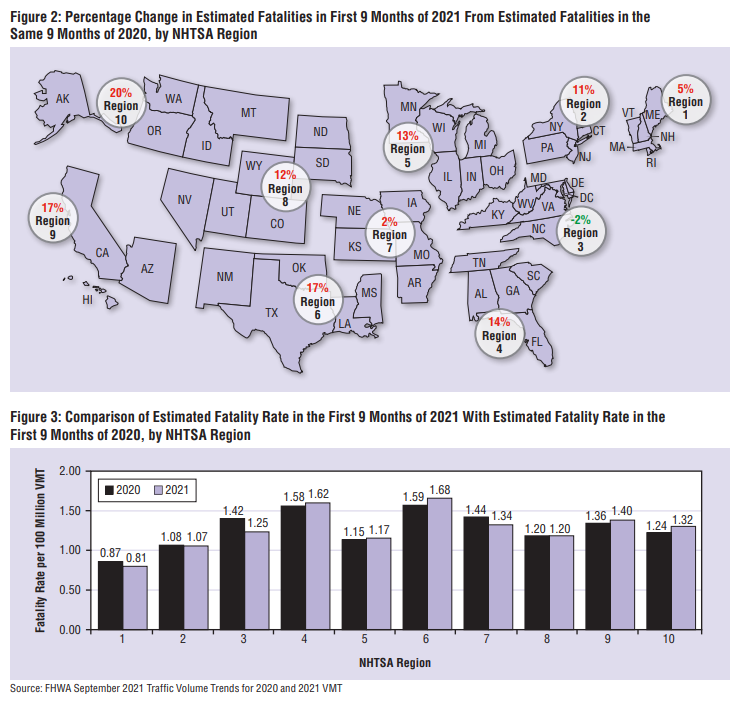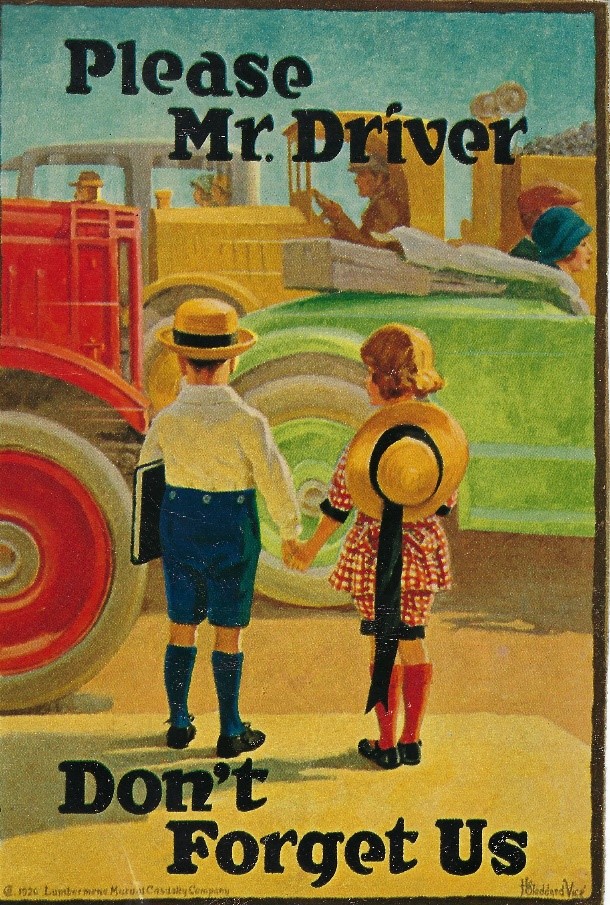Drive to Stay Alive

As a young paramedic back in the 1980’s I quickly learned how devastating automobile collisions are. The human body simply doesn’t hold up well given the dynamics of a high-speed impact. Back in those days seat belt use across the country was only about 20% and crash survivability just wasn’t a design feature of most cars and trucks. Forty some years later we’ve made huge improvements in both of these areas- seatbelt use at nearly 90% and survivability better than ever. But the trends we see in crash fatalities seems to contradict the latest improvements.
According to the National Highway Traffic Safety Administration (NHTSA), the early data for the first nine months of 2021 shows that an estimated 31,720 people died in motor vehicle crashes. That’s a 12% increase over the same time period in 2020. Not only are total fatalities rising, the fatality rate per 100 million vehicle miles travelled (VMT) has also been increasing. Figure 2 and Figure 3 below illustrate the rise in both total fatalities in the NHTSA regions across the country as well as the increase in fatality rates in the first nine months of 2020 verses 2021. Of note, the projected number of fatalities in the first nine months of 2021 are the highest of any nine-month period since 2006.

According to Dr. Steven Cliff, NHTSA’s Deputy Administrator, “We have to change a culture that accepts as inevitable the loss of tens of thousands of people in traffic crashes. This will require a transformational and collaborative approach to safety on our nation’s roads.”
The focus of the Safety Net is workplace safety, so it is worth noting that transportation incidents are, by far, the most common cause of workplace fatalities each year. The hazards associated with operating motor vehicles are present for just about everyone, at work or at play. Drivers, passengers, pedestrians, and bicyclists, of all age groups, are all represented on the fatality lists.
So, what is happening on the roads to cause these increases in fatalities and fatality rates? Cars are safer than ever, yet we are still killing someone about every 13 seconds around the clock, each and every day. The causes of these crashes are well-known- excessive speed, failure to yield the right-of-way, crossing centerlines, turning improperly, and following too closely. Considering that driver distraction can lead to all of these driving behaviors it follows that eliminating driver distraction would be a key. However, not all crashes are caused by distraction. Furthermore, as stated above, not all fatalities are drivers. Pedestrians, motorcycle riders, and bicyclists are also among those killed. So, solutions to these preventable deaths must be borne by all. Each person is responsible for themselves and for others on the public roadways.
Frankly, the solutions are not as complex as we might think. They are actually as easy as following the basic rules of the road and by allowing the space and time needed to act appropriately when something unusual or unexpected happens. Make a commitment to be a better driver and the life you save might be your own. These tips seem fundamental, but that’s because they are. Yet many people do not follow them and unless we change that dynamic, we will continue to see more and more people die unnecessarily each year.
- Obey all traffic laws including the speed limit. Remember, road conditions might make the posted speed limit too fast for safe travel.
- Allow for adequate space in front of your vehicle. Don’t follow too closely so that you can remain in control rather than allowing physics to take over.
- Get plenty of sleep each night, take breaks often during long trips, and stay properly hydrated. Actually, staying hydrated will require frequent breaks. A win, win.
- Never drive impaired.
- Treat others like you would like to be treated. Road rage is real, but totally unnecessary. Allow adequate time to arrive at your destination safely. Be especially cautious of pedestrians, motorcycles, and bicyclists.
These are not groundbreaking recommendations; you likely learned them in driver’s education class way back when. The devastating impacts of vehicle collisions, no pun intended, have been around as long as we’ve been driving vehicles. The graphic below is dated 1926 and was published by the Lumbermans Mutual Insurance Company. They are long-gone, but their message rings as true today as it did nearly 100 years ago. Please travel safely out there.


